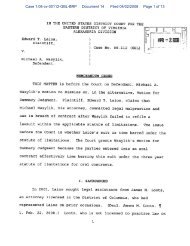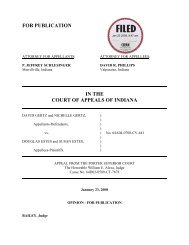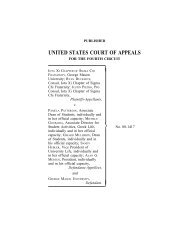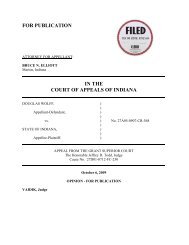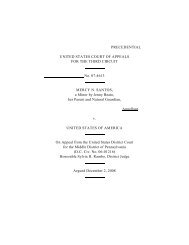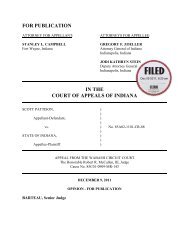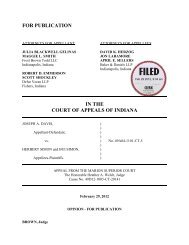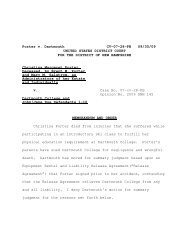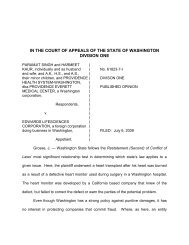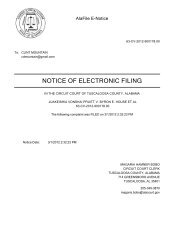IN THE COURT OF APPEAL OF THE STATE OF ... - FindLaw
IN THE COURT OF APPEAL OF THE STATE OF ... - FindLaw
IN THE COURT OF APPEAL OF THE STATE OF ... - FindLaw
You also want an ePaper? Increase the reach of your titles
YUMPU automatically turns print PDFs into web optimized ePapers that Google loves.
Finally, even assuming an instruction on Dee‟s fear of cancer was warranted,<br />
there was no prejudice flowing from the court‟s rejection of those instructions.<br />
The jury found that no defendant acted with malice, oppression, or fraud. In the<br />
absence of malice, oppression, or fraud, Dee could recover for fear of cancer only<br />
if her fear stemmed from a knowledge, corroborated by reliable medical and<br />
scientific opinion, that “it was more likely than not that the feared cancer [would]<br />
develop in the future due to the toxic exposure.” (Potter, supra, 6 Cal.4th at p.<br />
974.) Dee provided no reliable medical or scientific opinion that it was more likely<br />
than not that the feared cancer would develop as a result of her exposure to mold.<br />
3. Alleged Instructional Error<br />
Dee contends that it was error to refuse to instruct the jury with CACI<br />
Nos. 418 14<br />
and 1001. 15<br />
The argument is both forfeited and incorrect.<br />
14<br />
CACI No. 418 provides: “[Insert citation to statute, regulation, or ordinance]<br />
states:<br />
“If you decide<br />
“1. That [name of plaintiff/defendant] violated this law and<br />
“2. That the violation was a substantial factor in bringing about the harm,<br />
then you must find that [name of plaintiff/defendant] was negligent [unless you also find<br />
that the violation was excused].<br />
“If you find that [name of plaintiff/defendant] did not violate this law or that the<br />
violation was not a substantial factor in bringing about the harm [or if you find the<br />
violation was excused], then you must still decide whether [name of plaintiff/defendant]<br />
was negligent in light of the other instructions.”<br />
15 CACI No. 1001 provides: “A person who [owns/leases/occupies/controls]<br />
property is negligent if he or she fails to use reasonable care to keep the property in a<br />
reasonably safe condition. A person who [owns/leases/occupies/controls] property must<br />
use reasonable care to discover any unsafe conditions and to repair, replace, or give<br />
adequate warning of anything that could be reasonably expected to harm others.<br />
“In deciding whether [name of defendant] used reasonable care, you may consider,<br />
among other factors, the following:<br />
“(a) The location of the property;<br />
“(b) The likelihood that someone would come on to the property in the same<br />
manner as [name of plaintiff] did;<br />
24



